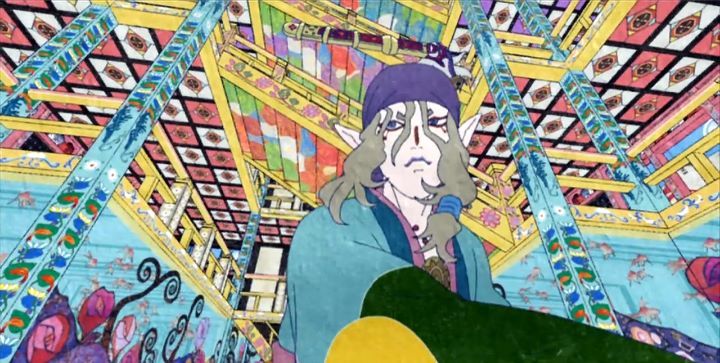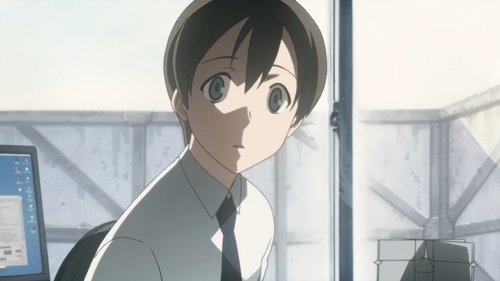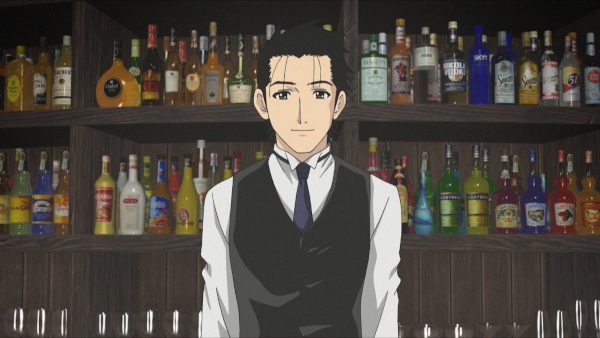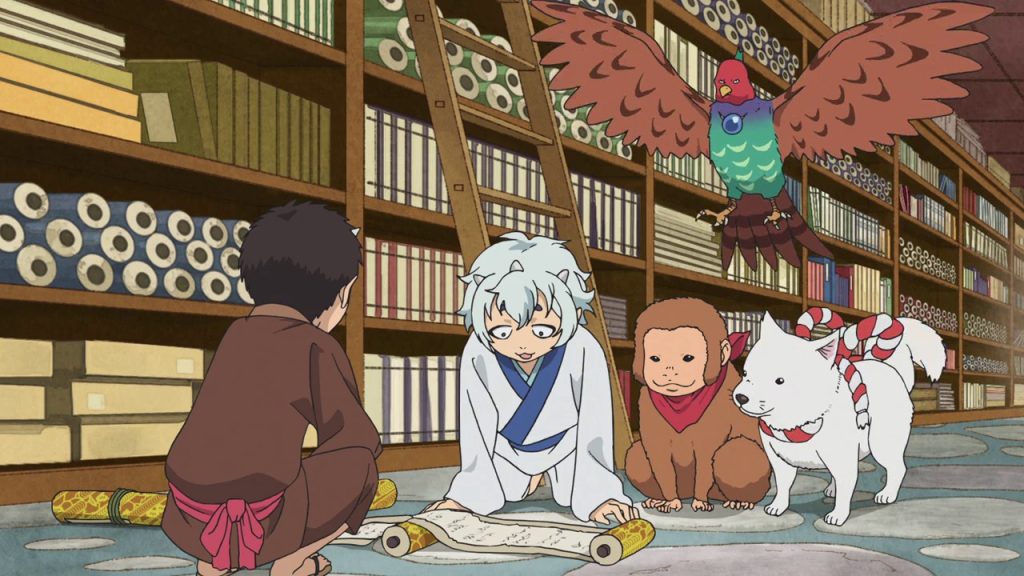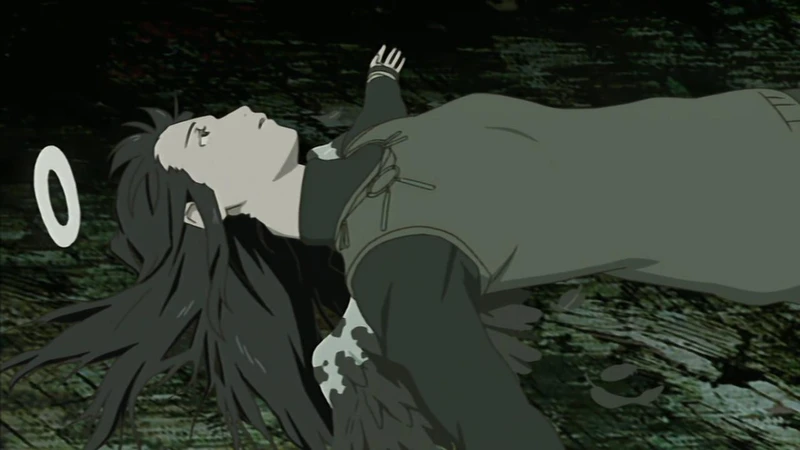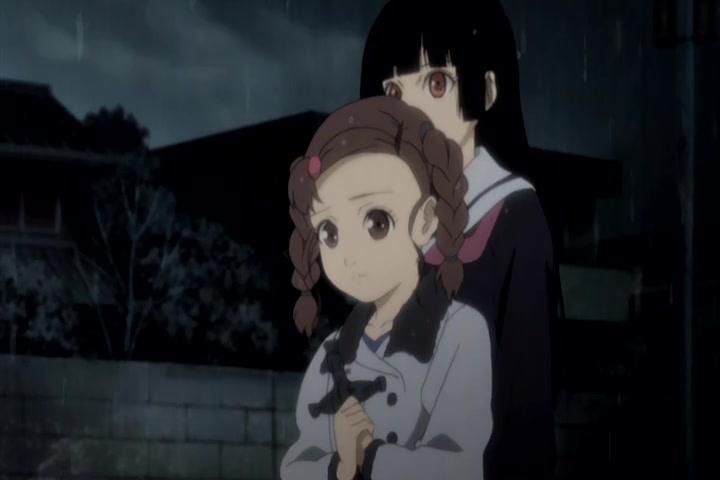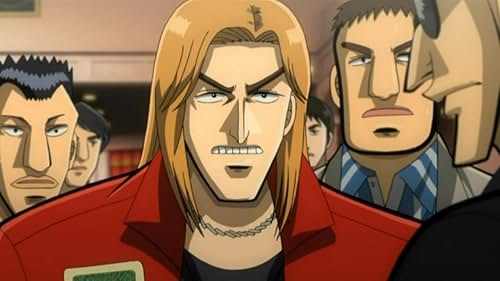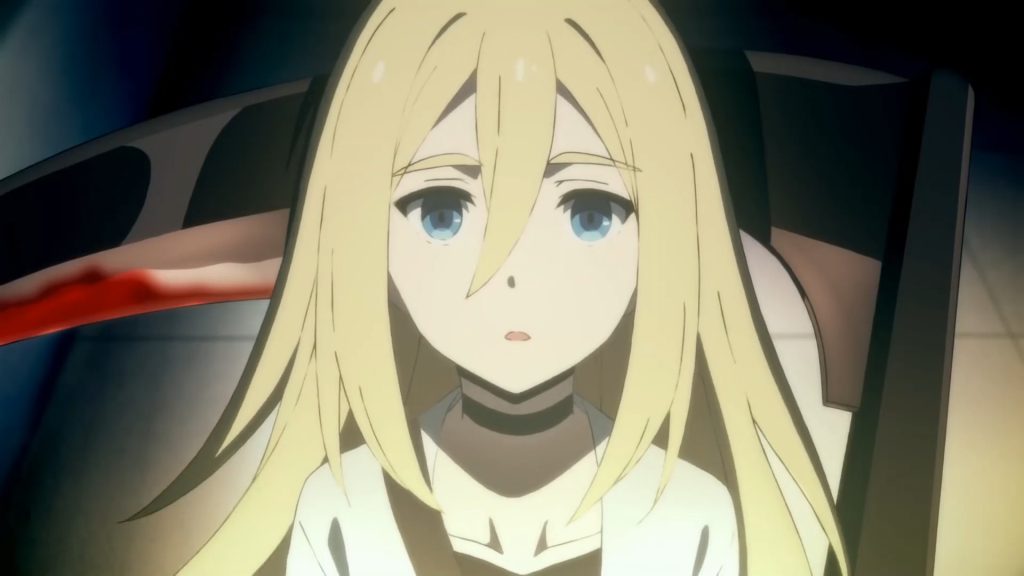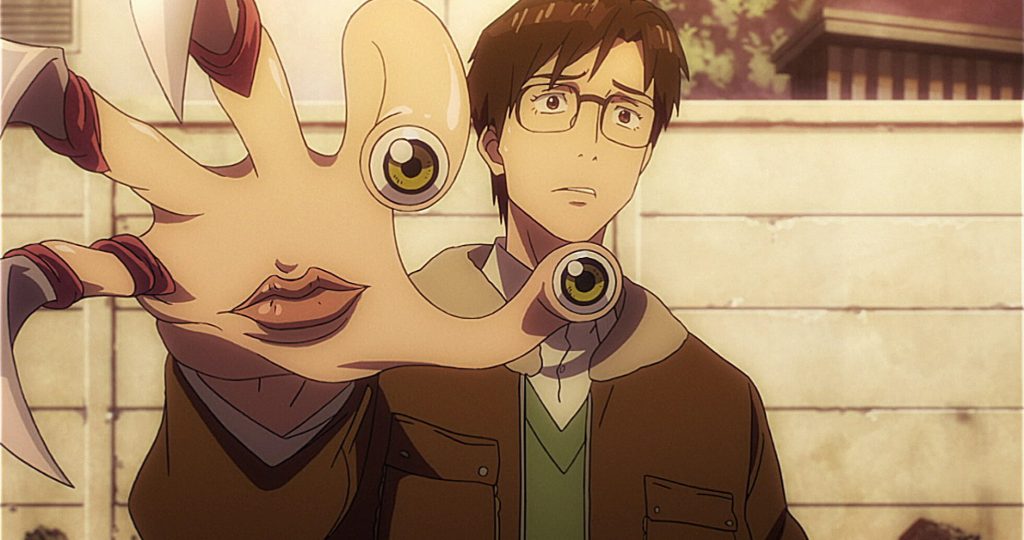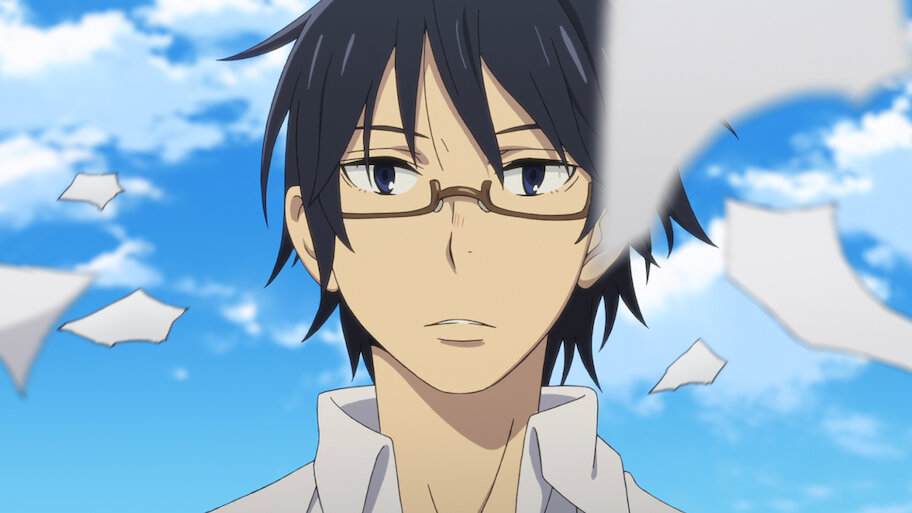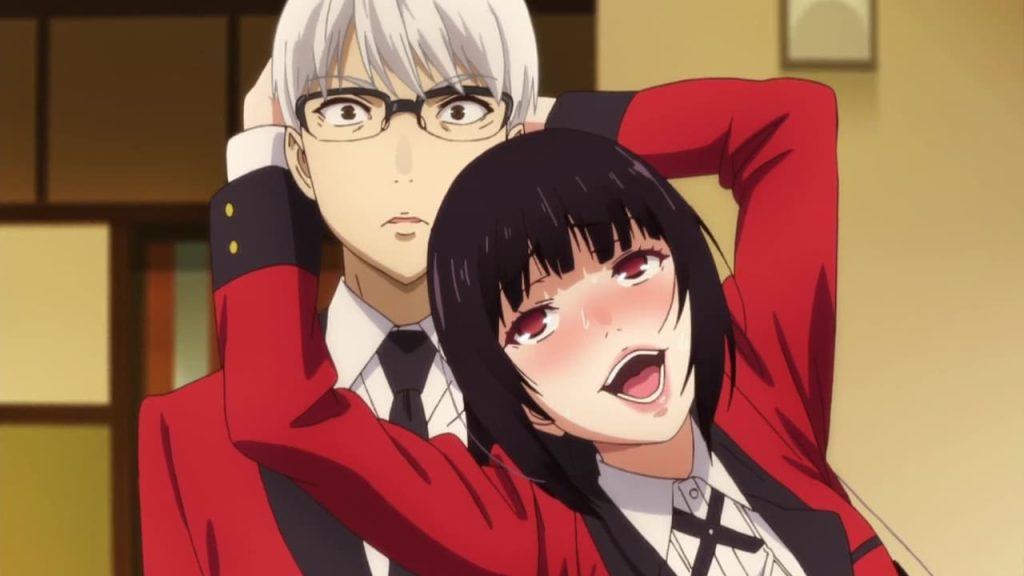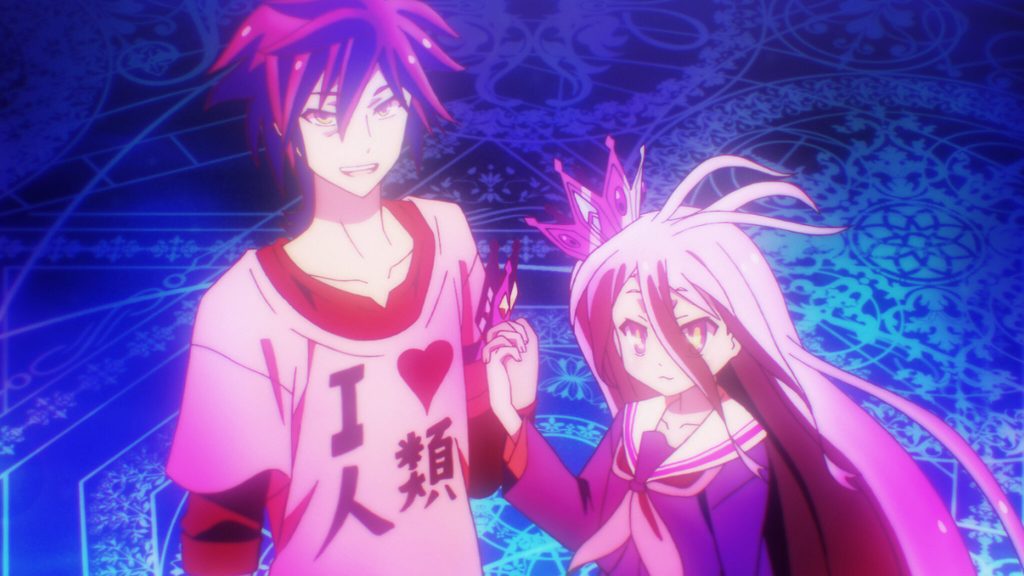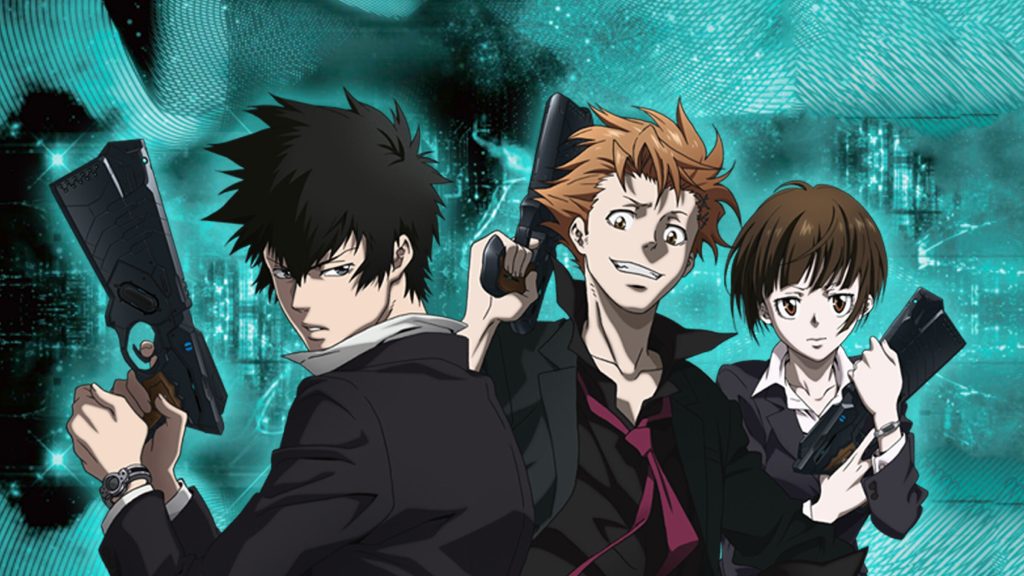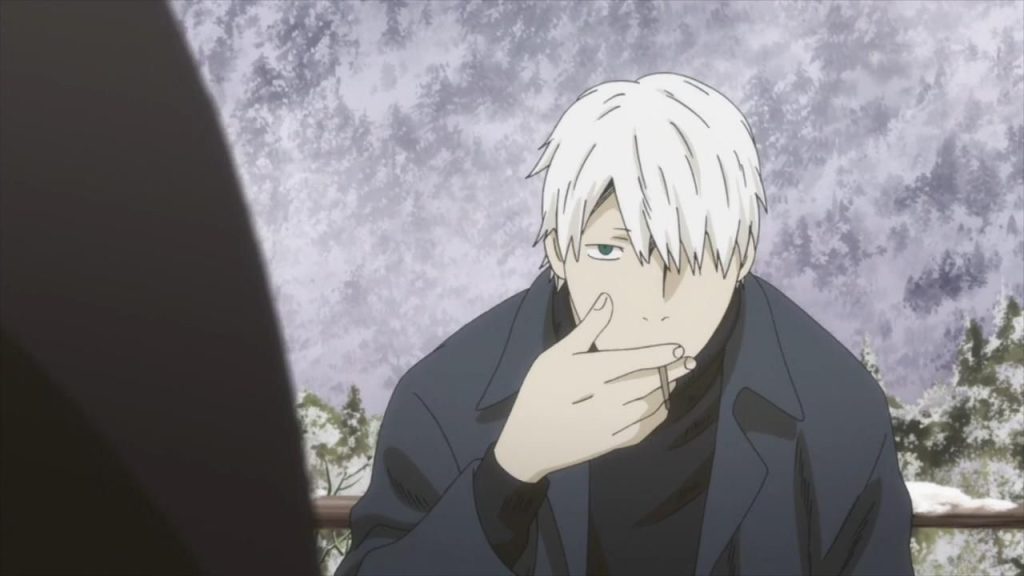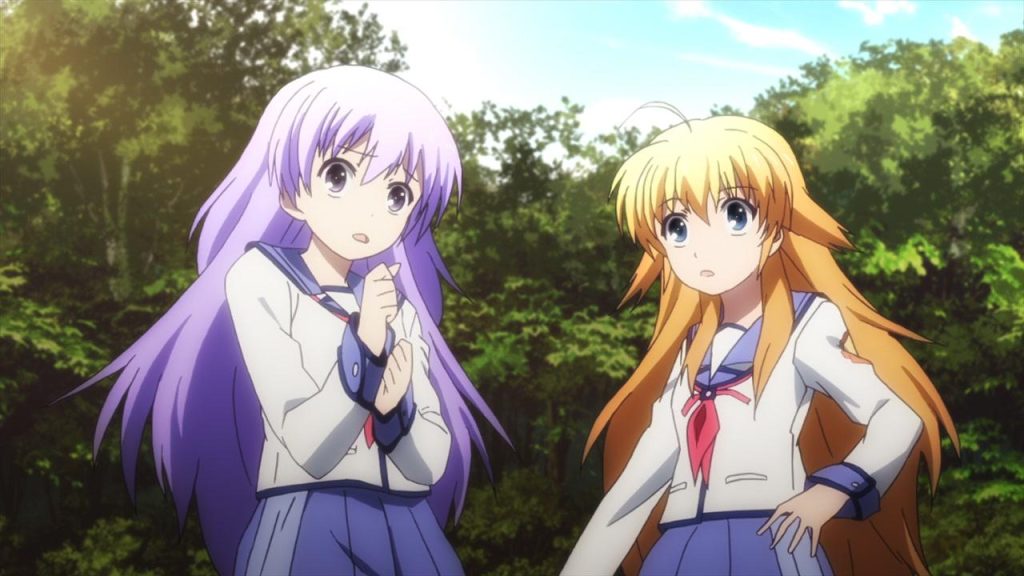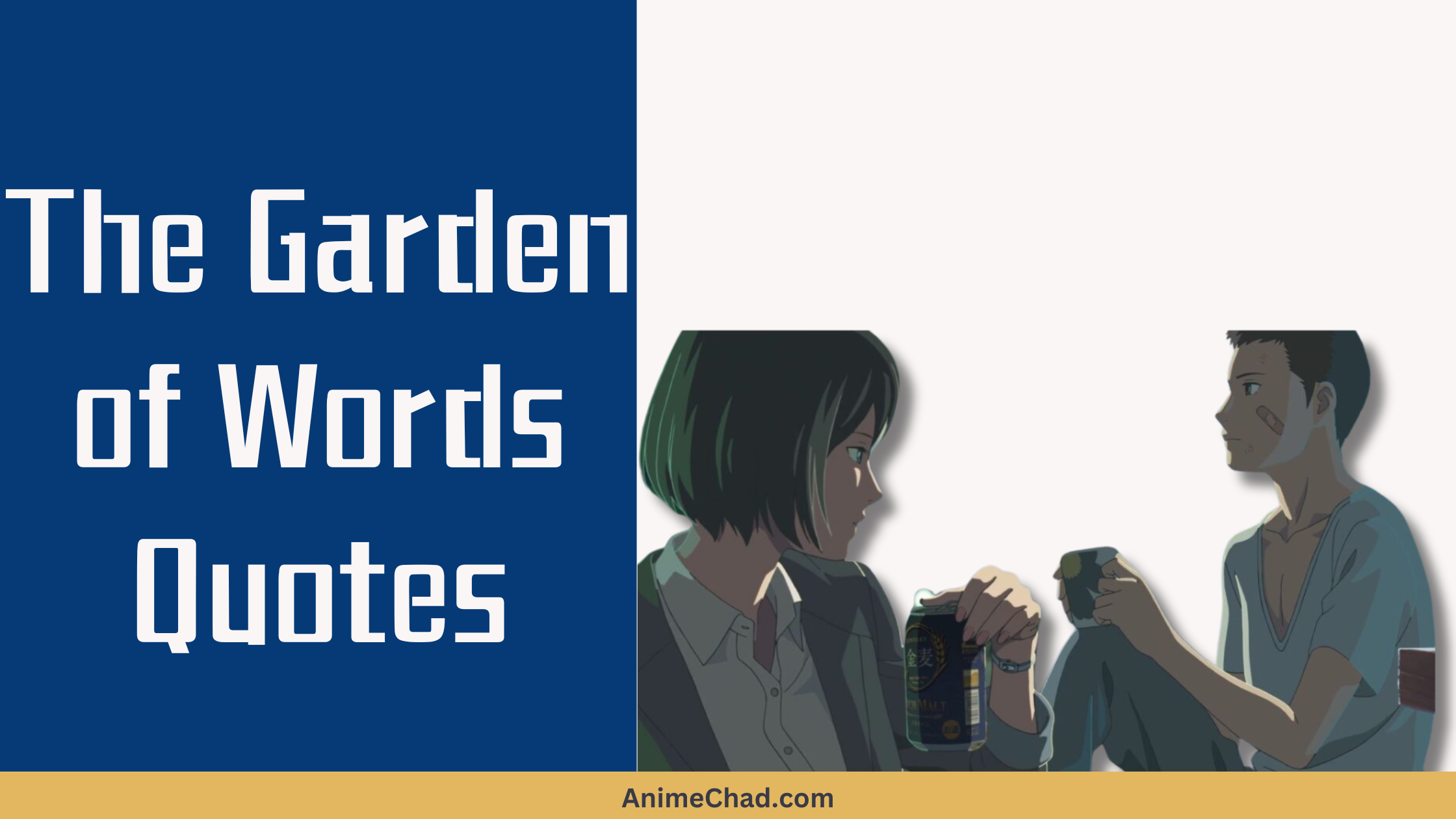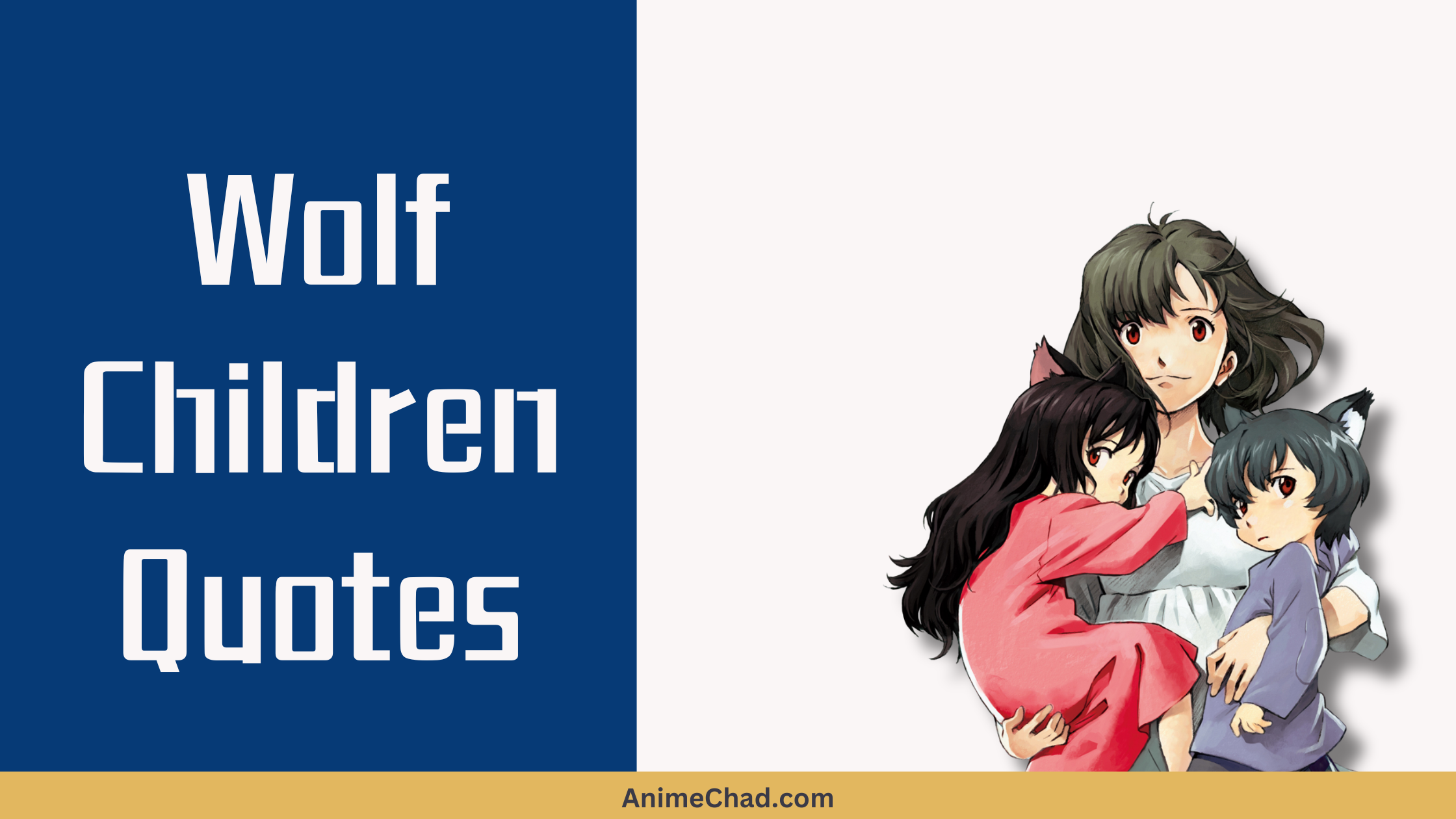Death Parade is a captivating 2015 anime that explores the afterlife through a mysterious bar where deceased souls are judged via high-stakes games, revealing the depths of human morality and emotion. At its core, the series delves into themes of judgment, psychological introspection, and the subversion of expectations, as seemingly simple games expose complex truths about life, death, and redemption.
While it has gained a dedicated following, many similar series remain underrated gems that echo its episodic structure, philosophical undertones, and focus on human frailty—deserving more attention for their innovative storytelling and emotional depth in a crowded anime landscape.
1. Mononoke (2007)
Current Streaming Availability: Netflix (in select regions), Crunchyroll.
Brief Plot Summary: A wandering Medicine Seller encounters supernatural spirits born from human regrets and emotions, using his knowledge to uncover their form, truth, and reason before exorcising them in episodic tales set in feudal Japan.
Specific Similarities to Death Parade: Like Death Parade, it features episodic psychological explorations of human flaws and morality, with the Medicine Seller acting as a neutral arbiter who judges and resolves spiritual conflicts, subverting expectations through layered revelations.
MAL Rating: 8.42/10. Episode Count: 12. Notable Staff/Studio: Directed by Kenji Nakamura at Toei Animation; known for its unique ukiyo-e inspired art style. Awards/Recognition: Nominated for Best TV Anime at the 2008 Tokyo Anime Awards.
2. Shigofumi: Letters from the Departed (2008)
Current Streaming Availability: Not widely available; check HIDIVE or DVD.
Brief Plot Summary: Fumika, a mail carrier in the afterlife, delivers “shigofumi”—letters from the dead to the living—revealing final thoughts, regrets, and truths that impact the recipients’ lives in episodic stories.
Specific Similarities to Death Parade: Both series use an episodic format to delve into themes of death, regret, and moral judgment, with protagonists acting as intermediaries who expose hidden human emotions and subvert initial perceptions of right and wrong.
MAL Rating: 7.48/10. Episode Count: 12. Notable Staff/Studio: Directed by Tatsuya Abe at J.C. Staff; original concept not based on manga. Awards/Recognition: Praised for its philosophical depth but remains underseen.
3. Bartender (2006)
Current Streaming Availability: Crunchyroll, Funimation.
Brief Plot Summary: Genius bartender Ryu Sasakura serves drinks at Eden Hall, a hidden Tokyo bar, where each episode features patrons sharing their troubles, leading to personal revelations and emotional healing through tailored cocktails.
Specific Similarities to Death Parade: Shares a bar setting as a neutral ground for exploring human psychology and morality, with episodic narratives that subvert expectations by turning mundane interactions into profound judgments on life choices.
MAL Rating: 7.34/10. Episode Count: 11. Notable Staff/Studio: Directed by Masaki Watanabe at Palm Studio; based on Araki Joh’s manga. Awards/Recognition: Noted for its relaxing jazz soundtrack and mature themes, though overlooked in favor of action series.
4. Hozuki’s Coolheadedness (2014)
Current Streaming Availability: Crunchyroll, HIDIVE.
Brief Plot Summary: Hozuki, a demon aide to the King of Hell, manages the bureaucratic chaos of the afterlife, dealing with quirky souls and mythical creatures in comedic yet insightful episodic adventures.
Specific Similarities to Death Parade: Both portray the afterlife as a structured system of judgment, blending humor with moral dilemmas and subverting expectations through satirical takes on human flaws and redemption.
MAL Rating: 7.75/10. Episode Count: 13 (Season 1; multiple seasons available). Notable Staff/Studio: Directed by Hiro Kaburagi at Wit Studio; based on Natsumi Eguchi’s manga. Awards/Recognition: Over 14 million manga copies sold, but anime is underrated outside Japan.
5. Haibane Renmei (2002)
Current Streaming Availability: Funimation, Crunchyroll.
Brief Plot Summary: Rakka awakens in a mysterious walled town as a “Haibane”—angel-like beings with no memories—who must navigate themes of sin, redemption, and purpose in a serene yet enigmatic afterlife.
Specific Similarities to Death Parade: Echoes the exploration of afterlife judgment and personal growth, with subtle psychological depth and subversions that challenge assumptions about guilt and forgiveness in a confined, rule-bound world.
MAL Rating: 7.97/10. Episode Count: 13. Notable Staff/Studio: Created by Yoshitoshi ABe at Radix; known for its atmospheric, minimalist animation. Awards/Recognition: Recommended work at the 2003 Japan Media Arts Festival.
6. Hell Girl (2005)
Current Streaming Availability: Crunchyroll, Funimation.
Brief Plot Summary: Ai Enma, the Hell Girl, fulfills vengeful requests via a mysterious website, sending tormentors to Hell at the cost of the requester’s soul, in dark episodic tales of grudges and consequences.
Specific Similarities to Death Parade: Focuses on moral judgments and the afterlife’s punitive systems, with episodic stories that subvert expectations by revealing the psychological toll of revenge and human darkness.
MAL Rating: 7.60/10. Episode Count: 26 (Season 1; four seasons total). Notable Staff/Studio: Directed by Takahiro Omori at Studio Deen; original anime concept. Awards/Recognition: Long-running series with cult following, but often overshadowed by flashier horror anime.
7. Gyakkyou Burai Kaiji: Ultimate Survivor (2007)
Current Streaming Availability: Crunchyroll.
Brief Plot Summary: Debt-ridden Kaiji Itou boards a ship for high-stakes gambling games to pay off his loans, facing psychological battles and moral dilemmas in a survival-of-the-wittiest scenario.
Specific Similarities to Death Parade: Both use games as metaphors for judging human nature and morality, subverting expectations with intense psychological tension and underdog triumphs against rigged systems.
MAL Rating: 8.27/10. Episode Count: 26. Notable Staff/Studio: Directed by Yuzo Sato at Madhouse; based on Nobuyuki Fukumoto’s manga. Awards/Recognition: Praised for its thriller elements, though less known than Madhouse’s bigger hits.
8. Angels of Death (2018)
Current Streaming Availability: Crunchyroll, Funimation.
Brief Plot Summary: Amnesiac Rachel Gardner teams up with serial killer Zack to escape a twisted underground facility, uncovering dark secrets and personal traumas floor by floor.
Specific Similarities to Death Parade: Shares themes of death, judgment, and psychological horror, with a structure that subverts expectations through revelations about morality and human bonds in a confined, deadly environment.
MAL Rating: 6.92/10. Episode Count: 16. Notable Staff/Studio: Directed by Kentaro Suzuki at J.C. Staff; based on a horror game. Awards/Recognition: Gained niche popularity but remains underrated for its atmospheric tension.
9. Parasyte: The Maxim (2014)
Current Streaming Availability: Crunchyroll, Netflix.
Brief Plot Summary: Teenager Shinichi Izumi merges with an alien parasite, fighting others of its kind while grappling with his changing humanity and moral boundaries.
Specific Similarities to Death Parade: Explores philosophical questions of identity and morality through body horror and judgments on human worth, subverting expectations with deep character evolution.
MAL Rating: 8.33/10. Episode Count: 24. Notable Staff/Studio: Directed by Kenichi Shimizu at Madhouse; based on Hitoshi Iwaaki’s manga. Awards/Recognition: Critically acclaimed for animation, but often eclipsed by mainstream sci-fi.
10. Erased (2016)
Current Streaming Availability: Netflix, Crunchyroll.
Brief Plot Summary: Satoru Fujinuma time-travels to his childhood to prevent a series of murders, including his mother’s, unraveling mysteries and personal regrets.
Specific Similarities to Death Parade: Both involve retrospect on life choices and moral judgments, subverting expectations with time-bending narratives that probe human psychology and redemption.
MAL Rating: 8.29/10. Episode Count: 12. Notable Staff/Studio: Directed by Tomohiko Ito at A-1 Pictures; based on Kei Sanbe’s manga. Awards/Recognition: Nominated for Anime of the Year at Crunchyroll Anime Awards 2017.
11. Kakegurui (2017)
Current Streaming Availability: Netflix.
Brief Plot Summary: At a elite academy where status is determined by gambling, transfer student Yumeko Jabami disrupts the hierarchy with her thrill-seeking bets and psychological insights.
Specific Similarities to Death Parade: Uses high-stakes games to expose morality and human vices, subverting expectations with intense psychological duels and judgments on character flaws.
MAL Rating: 7.23/10. Episode Count: 12 (Season 1; multiple seasons). Notable Staff/Studio: Directed by Yuichiro Hayashi at MAPPA; based on Homura Kawamoto’s manga. Awards/Recognition: Known for its wild animation, but underrated for deeper themes.
12. No Game No Life (2014)
Current Streaming Availability: Crunchyroll, Hulu.
Brief Plot Summary: Sibling gamers Sora and Shiro are transported to a world where conflicts are resolved through games, challenging gods and races to save humanity.
Specific Similarities to Death Parade: Features strategic games as tools for judgment and subversion, exploring underdog stories and moral complexities in a fantastical setting.
MAL Rating: 8.06/10. Episode Count: 12. Notable Staff/Studio: Directed by Atsuko Ishizuka at Madhouse; based on Yuu Kamiya’s light novels. Awards/Recognition: Popular but often dismissed as fanservice-heavy despite clever writing.
13. Psycho-Pass (2012)
Current Streaming Availability: Crunchyroll, Funimation.
Brief Plot Summary: In a dystopian future, inspectors use a system to judge criminal potential, but rookie Akane Tsunemori questions its morality amid rising threats.
Specific Similarities to Death Parade: Both scrutinize systems of judgment and human ethics, subverting expectations with psychological thrillers that challenge societal norms.
MAL Rating: 8.33/10. Episode Count: 22 (Season 1). Notable Staff/Studio: Directed by Naoyoshi Shiotani at Production I.G; written by Gen Urobuchi. Awards/Recognition: Won Best Original Anime at Tokyo Anime Awards 2013.
14. Mushishi (2005)
Current Streaming Availability: Crunchyroll, Funimation.
Brief Plot Summary: Ginko, a mushi master, travels episodically to resolve conflicts between humans and ethereal “mushi” beings that affect lives in subtle, profound ways.
Specific Similarities to Death Parade: Episodic tales of introspection and moral ambiguity, subverting expectations by blending supernatural elements with human psychology and quiet judgments.
MAL Rating: 8.65/10. Episode Count: 26 (Season 1). Notable Staff/Studio: Directed by Hiroshi Nagahama at Artland; based on Yuki Urushibara’s manga. Awards/Recognition: Highly regarded but underrated for its serene, philosophical style.
15. Angel Beats! (2010)
Current Streaming Availability: Crunchyroll, Hulu.
Brief Plot Summary: In a high school-like afterlife, Yuzuru Otonashi joins rebels fighting against an “angel” to uncover the purpose of their existence and unresolved regrets.
Specific Similarities to Death Parade: Explores afterlife judgment and emotional redemption, subverting expectations with a mix of action, drama, and moral revelations about life and death.
MAL Rating: 8.06/10. Episode Count: 13. Notable Staff/Studio: Directed by Seiji Kishi at P.A. Works; written by Jun Maeda. Awards/Recognition: Recommended at Japan Media Arts Festival 2010.
Why These Anime Work for Death Parade Fans
These underrated series resonate with Death Parade enthusiasts by mirroring its blend of psychological depth, moral quandaries, and episodic structures that peel back layers of human nature. They often subvert viewer expectations through clever twists on judgment and redemption, while their lesser-known status allows for fresh discoveries—perfect for fans seeking more introspective, thematically rich anime beyond the mainstream. Whether through supernatural intermediaries or high-stakes dilemmas, they capture the essence of exploring life’s complexities in innovative, underappreciated ways.
